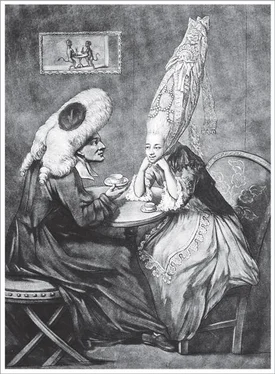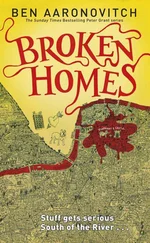Bill Bryson - At Home
Здесь есть возможность читать онлайн «Bill Bryson - At Home» весь текст электронной книги совершенно бесплатно (целиком полную версию без сокращений). В некоторых случаях можно слушать аудио, скачать через торрент в формате fb2 и присутствует краткое содержание. Жанр: Старинная литература, на английском языке. Описание произведения, (предисловие) а так же отзывы посетителей доступны на портале библиотеки ЛибКат.
- Название:At Home
- Автор:
- Жанр:
- Год:неизвестен
- ISBN:нет данных
- Рейтинг книги:4 / 5. Голосов: 1
-
Избранное:Добавить в избранное
- Отзывы:
-
Ваша оценка:
- 80
- 1
- 2
- 3
- 4
- 5
At Home: краткое содержание, описание и аннотация
Предлагаем к чтению аннотацию, описание, краткое содержание или предисловие (зависит от того, что написал сам автор книги «At Home»). Если вы не нашли необходимую информацию о книге — напишите в комментариях, мы постараемся отыскать её.
At Home — читать онлайн бесплатно полную книгу (весь текст) целиком
Ниже представлен текст книги, разбитый по страницам. Система сохранения места последней прочитанной страницы, позволяет с удобством читать онлайн бесплатно книгу «At Home», без необходимости каждый раз заново искать на чём Вы остановились. Поставьте закладку, и сможете в любой момент перейти на страницу, на которой закончили чтение.
Интервал:
Закладка:
The golden age of the country clergy ended abruptly, too. The 1870s saw the onset of a savage agricultural depression, which hit landowners and all on whom their prosperity depended. In six years, one hundred thousand farmers and farmworkers left the land. In our parish the population fell by almost half in fifteen years. By the mid-1880s, the ratable value of the entire parish was just £1,713—barely £100 more than it had cost Thomas Marsham to build his rectory three decades earlier.
By the end of the century the average English clergyman’s income was less than half what it had been fifty years before. Adjusted for purchasing power, it was an even more miserable pittance. A country parish ceased being an attractive sinecure. Many clergymen could no longer afford to marry. Those who had brains and opportunity took their talents elsewhere. By the turn of the century, writes David Cannadine in The Decline and Fall of the British Aristocracy , “the best minds of a generation were outside the church rather than within.”
In 1899, the Marsham family estate was broken up and sold, and that ended the family’s benign and dominant relationship with the county. Curiously, it was something unexpected that happened in the kitchen that was in large part responsible for the devastating agricultural depression of the 1870s and beyond. We’ll get to that story presently, but before we enter the house and begin our tour, we might perhaps take a few pages to consider the unexpectedly pertinent question of why people live in houses at all.
* Comparing values of 1851 with those of today is not straightforward because those values can be calculated using many different measures, and things that might be expensive now (farmland, live-in servants) were often comparatively cheap then and vice versa. So, depending on which method of comparison is used, Mr. Marsham's £500 of 1851 would be worth anything from £40,000 (about $60,000), using retail price indexes as the basis for calculation, to well over £1 million ($1.6 million), using a measure of gross domestic product. An average of the six most common measures gives a figure of about £200,000 ($320,000). Per capita income in Britain in 1851 was just slightly over £20.
* The ship was called the Resurgam , meaning “I shall rise again,” which proved to be a slightly unfortunate name, as the ship sank in a storm in the Irish Sea three months after it was launched in 1878 and never did rise again. Neither, come to that, did Garrett. Discouraged by his experiences, he gave up preaching and inventing, and moved to Florida, where he took up farming. That, too, proved a disaster, and he finished his disappointing and relentlessly downhill life as a foot soldier in the American army during the Spanish-American War before dying of tuberculosis, impoverished and forgotten, in New York City in 1902.
* The Koh-i-Noor had become one of the crown jewels two years earlier, after being liberated (or looted, depending on your perspective) by the British army during its conquest of the Punjab in India. Most people found the Koh-i-Noor a letdown. Although huge at nearly 200 carats, it had been poorly cut and was disappointingly deficient in luster. After the Great Exhibition, it was boldly trimmed to a more sparkly 109 carats and set into the royal crown.
* Rotten boroughs were those where a member of Parliament could be elected by a small number of people, as at Bute in Scotland, where just one resident out of fourteen thousand had the right to vote and so obviously could elect himself. Pocket boroughs were constituencies that had no inhabitants at all but that retained a seat in Parliament, which could be sold or given away (to an unemployable son, say) by the person who controlled it. The most celebrated pocket borough was Dunwich, a coastal town in Suffolk that had once been a great port—the third biggest in England—but was washed into the sea during a storm in 1286. Despite its conspicuous nonexistence, it was represented in Parliament until 1832 by a succession of privileged nonentities.
• CHAPTER II •
THE SETTING
I
If we were somehow to bring the Reverend Thomas Marsham back to life and restore him to his rectory, what would probably most surprise him—apart from being here at all, of course—would be to find that the house has become, as it were, invisible. Today it stands in a dense private woodland that gives it a determinedly secluded air, but in 1851, when it was brand-new, it would have stood starkly in open countryside, a pile of red bricks in a bare field.
In most other respects, however, and allowing for a little aging and the introduction of some electrical wires and a television aerial, it remains largely unchanged from 1851. It is now, as it was then, manifestly a house. It looks the way a house should look. It has a homely air.
So it is perhaps slightly surprising to reflect that nothing about this house, or any house, is inevitable. Everything had to be thought of—doors, windows, chimneys, stairs—and a good deal of that, as we are about to see, took far more time and experimentation than you might ever have thought.
Houses are really quite odd things. They have almost no universally defining qualities: they can be of practically any shape, incorporate virtually any material, be of almost any size. Yet wherever we go in the world we recognize domesticity the moment we see it. This aura of homeliness is, it turns out, extremely ancient, and the first hint of that remarkable fact was uncovered by chance just at the time the Old Rectory was being built, in the winter of 1850, when a mighty storm blew into Britain.
It was one of the worst storms in decades and it caused widespread devastation. At the Goodwin Sands, off the Kent coast, five ships were dashed to pieces with the loss of all hands. Off Worthing, in Sussex, eleven men going to the aid of a distressed ship drowned when their lifeboat was upended by a giant wave. At a place called Kilkee, an Irish sailing ship named Edmund , bound for America, lost its steering, and passengers and crew watched helplessly as the ship drifted onto rocks and was smashed to splinters. Ninety-six people drowned, though a few managed to struggle ashore, including one elderly lady clinging to the back of the brave captain, whose name was Wilson and who was, the Illustrated London News noted with grim satisfaction, English. Altogether more than two hundred people lost their lives in waters around the British Isles that night.
In London at the half-built Crystal Palace rising in Hyde Park, newly installed glass panes lifted and banged but stayed in place, and the building itself withstood the battering winds with barely a groan, much to the relief of Joseph Paxton, who had promised that it was stormproof but appreciated the confirmation.
Seven hundred miles to the north, on the Orkney Islands of Scotland, the storm raged for two days. At a place called the Bay o’ Skaill the gale stripped the grassy covering off a large irregular knoll, of a type known locally as a howie, which had stood as a landmark for as long as anyone had known it. When at last the storm cleared and the islanders came upon their newly reconfigured beach, they were astounded to find that where the howie had stood were now revealed the remains of a compact, ancient stone village, roofless but otherwise marvelously intact. Consisting of nine houses, all still holding many of their original contents, the village dates from five thousand years ago. It is older than Stonehenge and the Great Pyramids, older than all but a handful of built structures on Earth. It is immensely rare and important. It is known as Skara Brae.
Thanks to its completeness and preservation, Skara Brae offers a scene of intimate, almost eerie domesticity. Nowhere is it possible to get a more potent sense of household life in the Stone Age. As everyone remarks, it is as if the inhabitants have only just left. What never fails to astonish at Skara Brae is the sophistication. These were the dwellings of Neolithic people, but the houses had locking doors, a system of drainage and even, it seems, elemental plumbing with slots in the walls to sluice away wastes. The interiors were capacious. The walls, still standing, were up to ten feet high, so they afforded plenty of headroom, and the floors were paved. Each house has built-in stone dressers, storage alcoves, boxed enclosures presumed to be beds, water tanks, and damp courses that would have kept the interiors snug and dry. The houses are all of one size and built to the same plan, suggesting a kind of genial commune rather than a conventional tribal hierarchy. Covered passageways ran between the houses and led to a paved open area—dubbed “the marketplace” by early archaeologists—where tasks could be done in a social setting.
Читать дальшеИнтервал:
Закладка:
Похожие книги на «At Home»
Представляем Вашему вниманию похожие книги на «At Home» списком для выбора. Мы отобрали схожую по названию и смыслу литературу в надежде предоставить читателям больше вариантов отыскать новые, интересные, ещё непрочитанные произведения.
Обсуждение, отзывы о книге «At Home» и просто собственные мнения читателей. Оставьте ваши комментарии, напишите, что Вы думаете о произведении, его смысле или главных героях. Укажите что конкретно понравилось, а что нет, и почему Вы так считаете.












